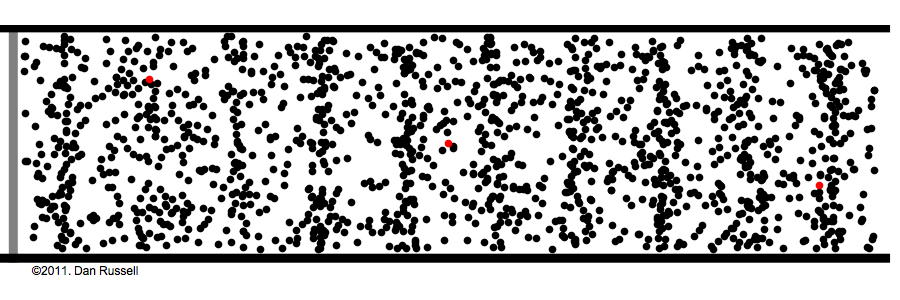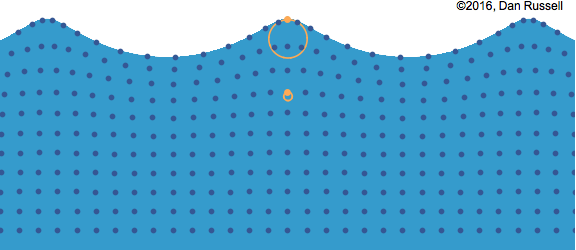3 | Types of Wave Motion
Types of Wave Motion
- Waves can involve different types of oscillations, but the two main types of wave motion are transverse waves and longitudinal waves.
Transverse Waves
- In transverse waves, oscillations are perpendicular to the direction of the wave.
- That is, if the wave is moving in a forward direction, the oscillations occur in an up-and-down direction.
- Examples of transverse waves:
- All electromagnetic waves
- Seismic S-waves
- Waves caused by moving a rope up and down

Transverse waves involve oscillations that are perpendicular to the direction of energy transfer.
(Image: © Dan Russell)
Longitudinal Waves
- In longitudinal waves, oscillations are in line with the direction of the wave.
- That is, if the wave is moving in a forward direction, the oscillations occur in a back-and-forth direction.
- Examples of longitudinal waves:
- Sound waves
- Seismic P-waves

Longitudinal waves involve oscillations that are in line with the direction of energy transfer.
(Image: © Dan Russell)
Surface Waves
- In surface waves, oscillations are circular.
- These can be considered as a hybrid between transverse and longitudinal waves.
- Surface waves occur at the interface of two different media.
- Examples of surface waves:
- Waves in water (although these are often incorrectly described as transverse waves)
- Seismic surface waves

Surface waves involve circular oscillations at an interface between different media.
(Image: © Dan Russell)

